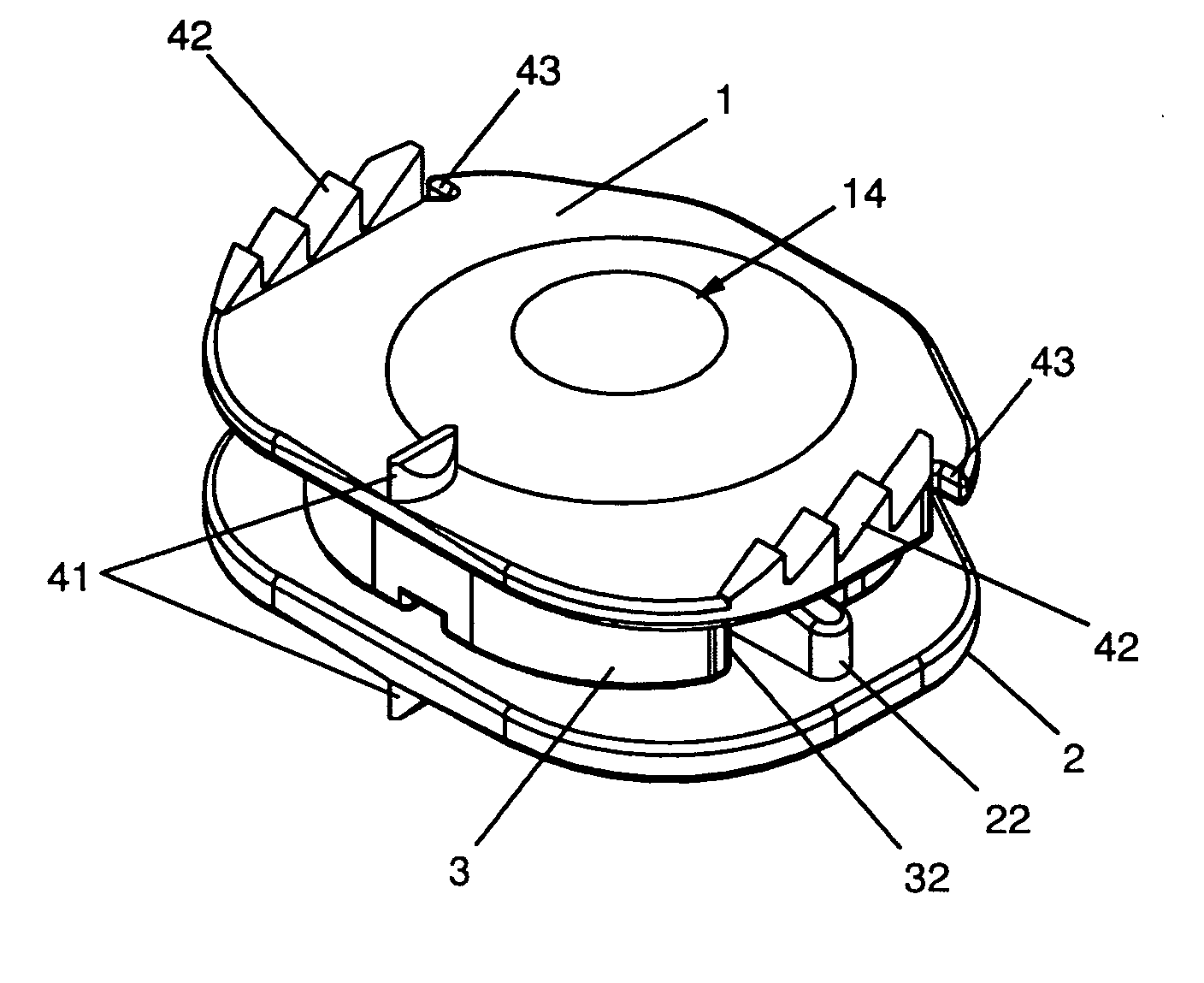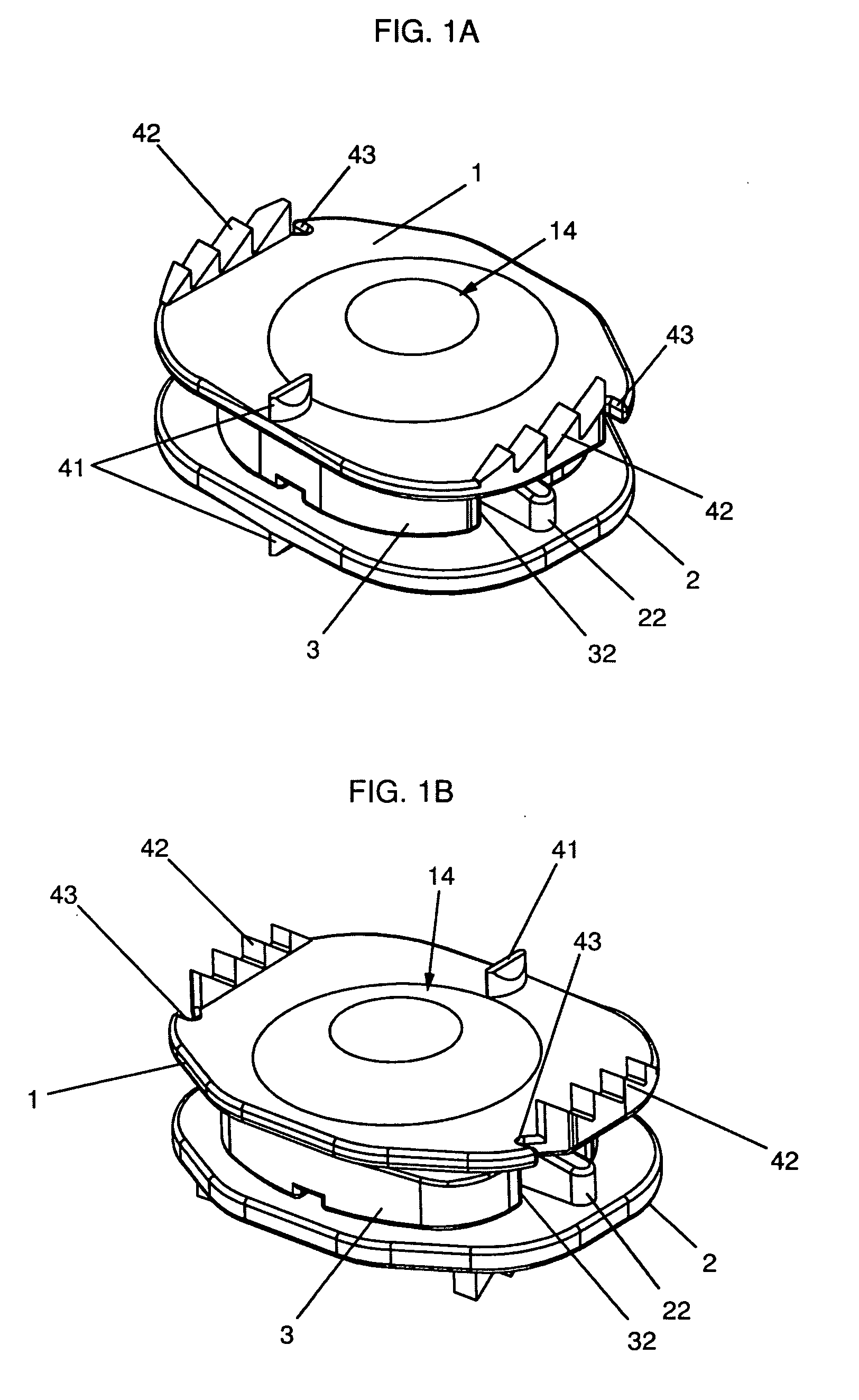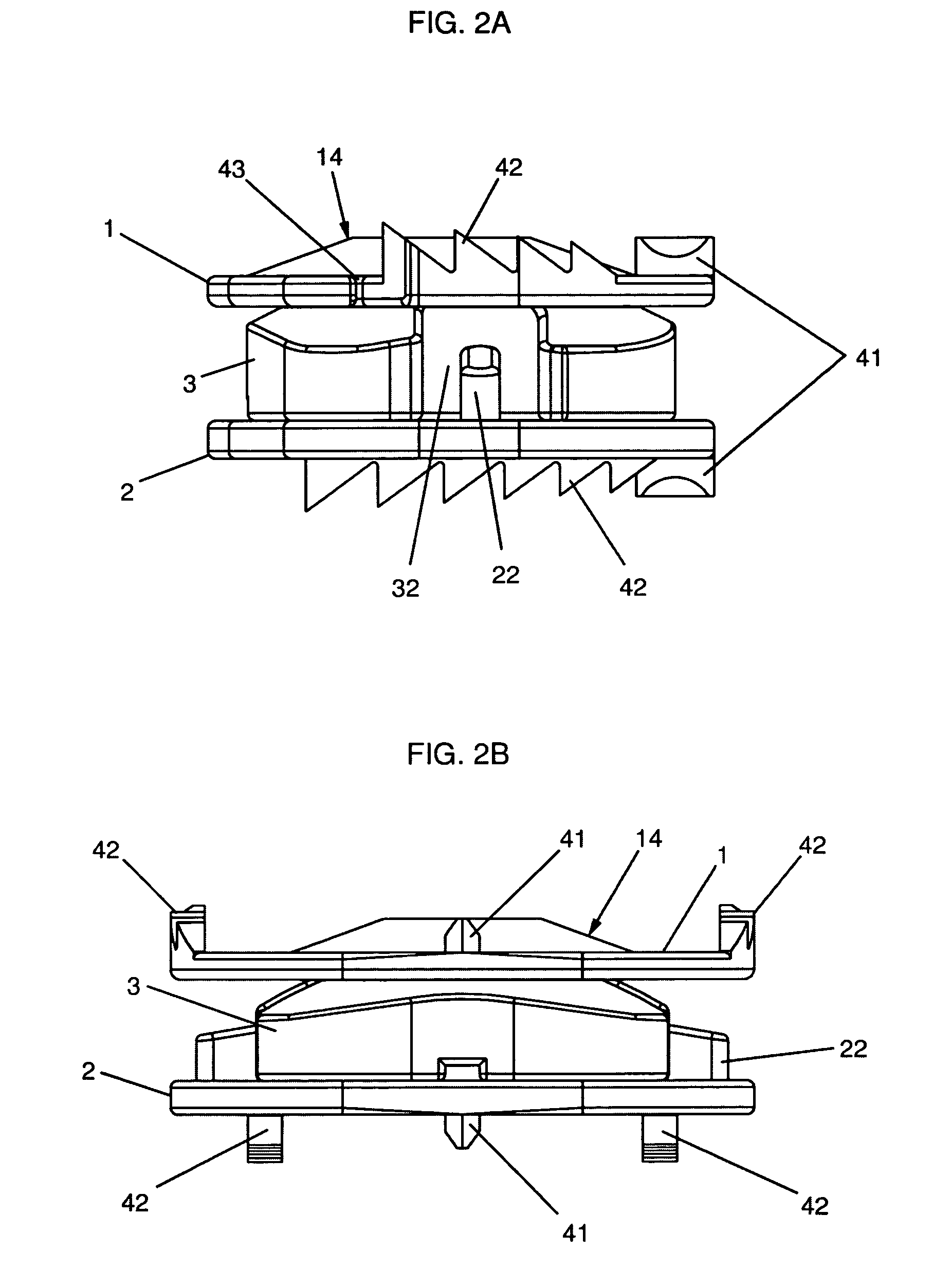Intervertebral disc prosthesis and instrumentation for insertion of the prosthesis between the vertebrae
a technology for intervertebral discs and instruments, applied in the field of intervertebral disc prosthesis, can solve the problems of difficult inserting between the vertebrae, lack of stability, and inability to generally ensure the stability of the elements
- Summary
- Abstract
- Description
- Claims
- Application Information
AI Technical Summary
Benefits of technology
Problems solved by technology
Method used
Image
Examples
Embodiment Construction
[0047] The present invention relates to an intervertebral disc prosthesis comprising at least osseous anchoring means (41) forming a guide blade intended to prevent rotation of the plates of the prosthesis between one another and facilitate insertion of the prosthesis. More precisely, the prosthesis comprises at least first osseous anchoring means (42) and at least second osseous anchoring means (41), the first osseous anchoring means (42) extending to near the periphery of the plate on which it is situated and the second osseous anchoring means (41) being offset according to the antero-posterior axis relative to the first osseous anchoring means (42). The second offset osseous anchoring means (41) comprise a portion, so-called basal, solid with the plate on which it is situated and a portion, so-called sharp-edged, of width narrower than the basal portion. This sharp-edged portion forms a sort of blade intended to score the surfaces of the vertebral plates with which it comes into ...
PUM
 Login to View More
Login to View More Abstract
Description
Claims
Application Information
 Login to View More
Login to View More - R&D
- Intellectual Property
- Life Sciences
- Materials
- Tech Scout
- Unparalleled Data Quality
- Higher Quality Content
- 60% Fewer Hallucinations
Browse by: Latest US Patents, China's latest patents, Technical Efficacy Thesaurus, Application Domain, Technology Topic, Popular Technical Reports.
© 2025 PatSnap. All rights reserved.Legal|Privacy policy|Modern Slavery Act Transparency Statement|Sitemap|About US| Contact US: help@patsnap.com



